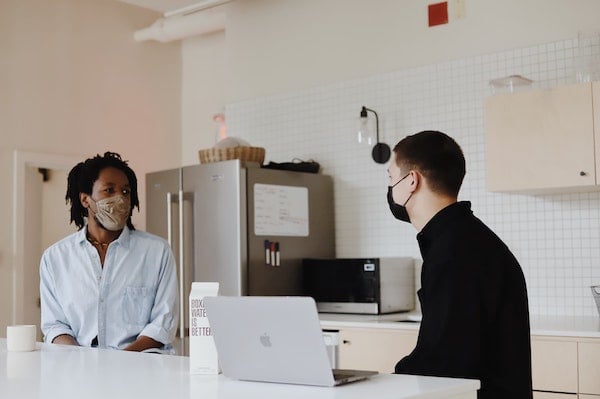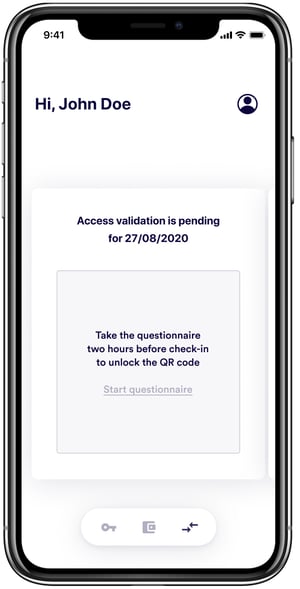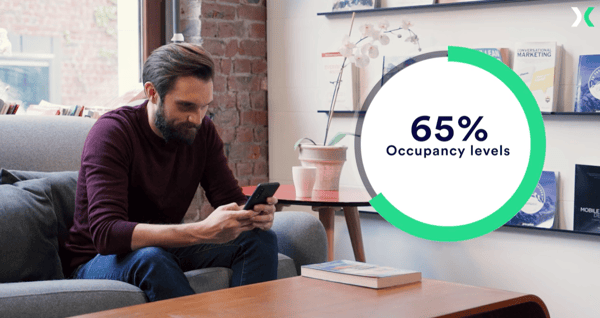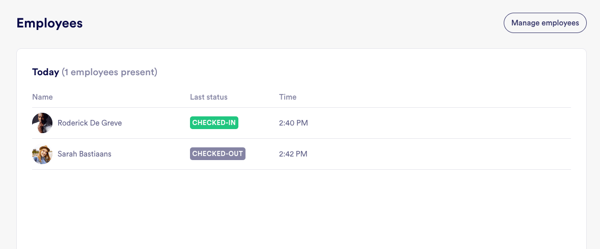As we begin to see the “light at the end of the tunnel” of the global health crisis and more and more companies institute return-to-work plans, the role of HR personnel in the workplace is rapidly changing.
No longer is the HR role only about communicating information to employees and higher-ups, managing interpersonal conflicts, and hiring; now, it’s about keeping everyone safe and healthy while managing a new, often asynchronous work environment where employees are working from all kinds of different locations and at odd hours.

In essence, the HR focus on tasks like onboarding new hires has shifted to a focus on supporting a new, different, adapted, and adaptable employee experience.
Certainly, navigating these new arrangements can come with hiccups - but through careful planning and reliance on integrated technological solutions, savvy HR professionals are viewing this new world of work as an opportunity for growth, innovation, and productivity.
Below are some of the takeaways we've learned from HR experts on best practices for adapting to a transforming workplace during this decidedly unusual time.
(To learn more, check out our helpful HR guide to building access, available for free download below).

Going with the flow - the people flow
In the new work environment, managing people flows has become more important than ever.
Even as the global health crisis wanes, entrants to the workplace cannot afford to be clogged up at the entrances, jammed into elevators, or packed into too-close workspaces.
Moreover, it’s become more important for HR and security personnel to be aware of exactly who is in the building at the same time - when they come, when they leave, and whom they are in contact with during their time on the premises.

Visitor management solutions can be extremely helpful for facilitating great people flow by relying on a host of integrated systems.
These include:
Rolling out the red carpet for employees
One critical lesson of the global health crisis has been the idea that, effectively, “everyone is a visitor” - not just clients, contractors, and maintenance or delivery personnel, but regular company employees.
As a result, a company’s regular personnel need to be given the “red carpet treatment” in the form of a variety of features to welcome them to work and keep them safe.
One way to support employees returning to work is to provide pre-registration in advance of visits, including unique digital access codes, which allow quick check-in at kiosks upon entry with the swipe of a smartphone.
.png?width=600&name=Henry%20touchless%20(1).png) Digital desk-reservation software allows employees to reserve their space before they arrive - particularly useful in situations where they may be working from home or offsite on most days, or need special video-conferencing technology or other tools enabled in advance of their arrival. These tools also enable companies to respect occupancy limits and facilitate safe social distancing.
Digital desk-reservation software allows employees to reserve their space before they arrive - particularly useful in situations where they may be working from home or offsite on most days, or need special video-conferencing technology or other tools enabled in advance of their arrival. These tools also enable companies to respect occupancy limits and facilitate safe social distancing.

In addition, wellness questionnaires sent to employees ahead of their arrival (to check for any symptoms of illness), along with touch-free temperature checks, allow HR personnel and security to bar entry to anyone who might put others at risk.
A focus on security and privacy
One of the great benefits enabled by digital visitor management systems is the plethora of robust security solutions they facilitate: Besides providing a smooth flow, electronic sign-in (with QR or other digital access codes) provides HR and security personnel with real-time lists of all employees, visitors, and contractors currently in the building.

What’s more, they eliminate the annoyance and potential privacy breaches of those old-fashioned pen and paper logbooks and allow instant notification to anyone on the premises in the event of emergencies.
With an increased global focus on data privacy - particularly given the current need for companies to collect sensitive health data from both employees and visitors - it’s become clear to savvy HR personnel that utilizing digital solutions can provide much stronger security, and avoid a lot of headaches in the process.
Looking ahead: An HR leader's guide to safe building access
It goes without saying that the past year has been marked by significant uncertainty.
HR personnel has been forced not only to assume weighty new responsibilities but also to rethink the nature of work and productivity, as employees embrace more agile working arrangements and hybrid set-ups that may dramatically change the amount of time they spend on a company’s physical premises.
Fortunately, in all of these new situations, digital solutions can adapt to a company’s changing needs and help make everyone’s life easier.
The number one skill set that any HR professional needs to have is being receptive to change. We need to be very resilient and very agile, because the profession will look quite different ten years from now. That's a core skill set, and then the rest we can teach. Marjolein van Eck, CHRO at IBM Benelux
To learn more, check out our guide, “Building Access in the ‘New Normal’: A Guide for HR Leaders”.
We hope it will answer your questions about how technological solutions can facilitate a smooth transition back into the workplace, and streamline some of the tasks that are now encompassed by the HR role.
